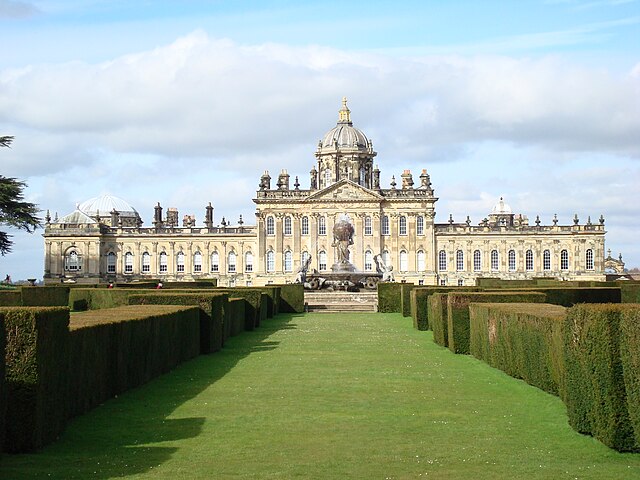Humphry Repton was the last great designer of the classic phase of the English landscape garden, often regarded as the successor to Capability Brown. His style is thought of as the precursor of the more intricate and eclectic styles of the 19th century. His first name is often incorrectly spelt "Humphrey".
Portrait of Humphry Repton
Business card for Humphry Repton by Thomas Medland
Illustration of Wentworth Woodhouse, South Yorkshire before proposed landscaping
Illustration of Wentworth Woodhouse, South Yorkshire after proposed landscaping
The English landscape garden, also called English landscape park or simply the English garden, is a style of "landscape" garden which emerged in England in the early 18th century, and spread across Europe, replacing the more formal, symmetrical French formal garden which had emerged in the 17th century as the principal gardening style of Europe. The English garden presented an idealized view of nature. Created and pioneered by William Kent and others, the "informal" garden style originated as a revolt against the architectural garden and drew inspiration from landscape paintings by Salvator Rosa, Claude Lorrain, and Nicolas Poussin.
Rotunda at Stowe Gardens (1730-38)
The paintings of Claude Lorrain inspired Stourhead and other English landscape gardens.
Castle Howard (1699–1712), a predecessor of the English garden modelled on the gardens of Versailles
Ionic Temple at Chiswick House in west London








